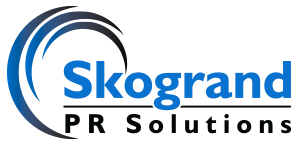
Photo by rawpixel on Unsplash
It is common to experience requests to take consumer surveys, typically at the end of a receipt. These surveys often entail a short questionnaire and often come with some sort of reward, either a percentage off of your next purchase or a free item. However, these surveys are sometimes used to review workers at a specific location. Have you ever been asked, “Please take this survey for our performance, but a score below five is considered a fail to our bosses?” Oftentimes following these requests is the realization that the survey itself only has a scale from one to five, making their score of anything but perfect a fail. Not only is the ritual of this phrase a negative experience for the customer, but the scale is also not correctly measured.
The purpose of consumer surveys is to understand the quality of a customer’s experience or conduct research for the business. This information is essential for businesses and executives to gather; however, asking consumers for a specific score skews results. Begging for a perfect score not only makes the consumer lose trust in the business, but also puts consumers in an uncomfortable position, as they feel responsible for the professional well-being of said employee.
Prior to this, consumer surveys were done by the will of the customer. However, the invention of the Net Promoter Score has shifted the purpose for employers, making it a large portion of an employee’s success. The Net Promoter Score, or NPS, is widely recognizable as the scale to measure consumer surveys and specifically known for questions like, “How likely are you to recommend ___ to a friend?” Kelvin Claveria of Vision Critical wrote, “Unfortunately, as companies nag customers for more input, they get less insight out of it.” The spam of consumer surveys lessens the likelihood that consumers will actually complete them.
In addition to diminished results, NPS scores have also introduced a new issue for employees. Claveria of Vision Critical added, “Another issue: many employees have figured out how to game the NPS system. As both CSAT and NPS have gained traction among the majority of Fortune 1000 brands, many companies started tying bonuses and other incentives to these metrics.” This shows that the question employees have been asking to their customers means more than simply feedback. While connecting NPS scores to bonuses seems like an accurate way to measure employees’ productivity, it is essentially backfiring because of the way it imposes confusion and negativity on the customer. As employees have “outsmarted” the system, their company is receiving skewed and invalid results.
In order for businesses to gather valid consumer survey results, it is worth questioning the use of NPS or mandate that employees refrain from trying to influence scores.
To read about research for publicity purposes, click here.
